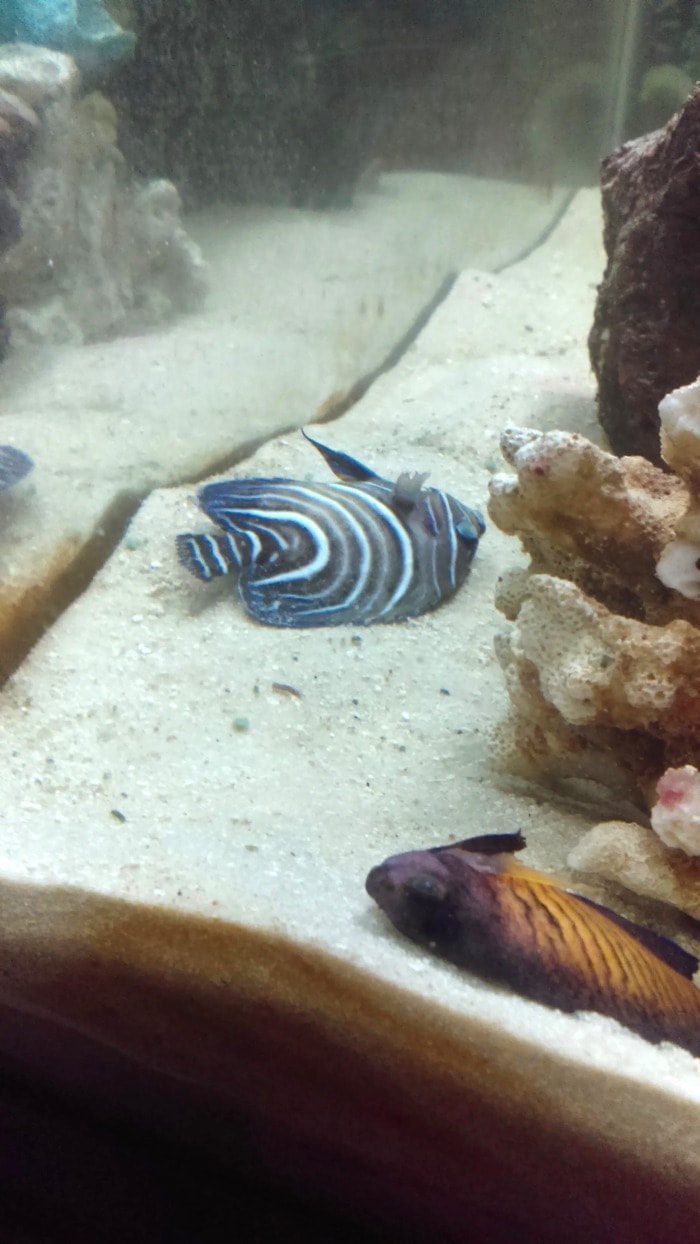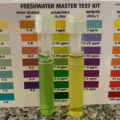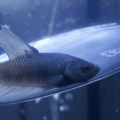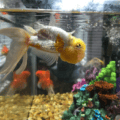Here’s a scenario for you: you do your due diligence as an aquarist and enjoy a happy aquarium for some time.
But now you wake up to find a dead pet fish in your tank and you have no idea what to do in that situation.
If it was one of the many tank inhabitants, the fish could have died days ago without you noticing that it’s missing.
Should you go ahead and dispose of the fish or just leave it there for nature to take its natural course?
What steps should you take after one of your aquarium fish dies?
What should you do when you discover a dead fish in your tank?
A dead fish should be removed from its tank immediately after you’ve found out about the incident. When a fish dies it starts to decompose right away, releasing chemicals that could foul the water in the aquarium. The polluted water may then kill the other fish in the tank.
Regardless of what killed your pet fish, you should always change a portion of the aquarium’s water immediately after the incident.
A decomposing fish will release large amounts of Ammonia into the water.
High levels of Ammonia are dangerous to the other fish in the tank and may poison them, making the aquarium inhabitable.
There’s also another reason to never leave the corpse of a fish in the aquarium for days:
When a fish dies in the aquarium, it will likely get eaten by the other inhabitants in the tank after some time.
If the fish died from a disease, the corpse poses a health risk to the animals that consume it.
5 steps to take when a fish dies in your aquarium
There are a couple of simple steps that every aquarist should take when a fish dies in their aquarium.
This is done to prevent further fish deaths.
1. Remove the corpse of the fish from the tank.
Use a fish net such as this or a similar one to remove the corpse of the dead fish (here’s another option to check on Amazon).
Try not to use your hands as you still don’t know what the fish has died from.

If you do happen to use your hands, wash them thoroughly after.
by Mywifeisgunnakillme
If the fish has just disappeared, and you can’t find its corpse in sight, it could mean one of three things:
- The fish has gone missing because it is actually hiding or stuck somewhere;
- The other fish have already eaten the corpse;
- The fish has jumped out of the water and is nearby on the floor.
If you have a community aquarium with carnivorous fish in it , it is likely that they took the opportunity to feast on the victim.
If you keep a lot of nano fish then the aquarium filter’s intake could be at fault here.
Most of the canister filters used in larger aquariums would be strong enough to suck a small fish in their intake, if there’s no barrier on the filter’s inlet.
Anyway, once found, I recommend putting the corpse of your pet fish in a plastic box or a bag and storing it in the freezer before you decide how to dispose of the body.
2. Test the aquarium water for raised Ammonia levels.
The size of your fish tank determines how fast its water will get polluted if a dead fish is left in there to rot.
A small fish decomposing in a 30-gallon aquarium will likely take a whole day before the water becomes foul.
However, a fish that has died in a 5-gallon tank could pollute its water almost immediately.
This means that you’d want to remove the a dead fish from a tank within a day if you don’t want to risk spoiling the water.
The time it takes for a fish to completely decompose depends on its body size.
Without any scavengers in the tank, it’d take a 1-inch fish about 5 days to decompose and disappear.
A 2-inch fish takes about 10 days, at which point it will barely resemble a skeleton.
Having scavengers such as omnivorous snails in the tank could cut the time for the corpse to disappear in half.
Ammonia, however, starts leaching from the body of the fish almost immediately after its death. Here’s the mechanism that ties Ammonia levels to a dead fish:
In a healthy aquarium system, a set of beneficial bacteria will take care of the Ammonia that gets released into the water with decomposing fish waste. When a fish dies, however, its body starts to release so much Ammonia that the bacterial colony does not have enough time to process it all in time. These bacteria cannot expand their colony fast enough and the other fish start to suffer from the poisoning effects of the excess Ammonia in the water.
A good visual sign that the body of the fish has been too long in the tank is the aquarium water becoming cloudy.
This is due to a bacterial bloom of another set of bacteria, responsible for turning the rotting flesh into Ammonia (these are not the beneficial bacteria I mentioned above).
Anyway, what you would want to do after removing the dead fish from the aquarium is to test the water inside.
You’ll need to use a liquid test kit because water test strips are notorious for being inaccurate.
Liquid water test kits will help you make a precise estimation of how polluted the water has become and whether it is dangerous to the other fish in the tank.
A liquid water test kit will let you know if you should clean the aquarium further or change its water.
Here’s how the water parameters of a safe aquarium environment look like in parts per million (ppm):
- 0 ppm of Ammonia
- 0 ppm of Nitrite
- No more than 10 to 20 ppm of Nitrate
Aquarium water with these test readings is safe for the addition of new fish and for the ones that are already inside.
However, even 1 ppm of Ammonia could burn the gills of the fish in the aquarium.
Low levels of Nitrite are also harmful to freshwater fish. A test strip will not be able to give an accurate enough estimation of that.
If you don’t own a liquid water test kit you could get the API Master Kit which can test for all of the above parameters and is the preferred choice by most fish keepers.
You can either rush to the fish store to get one or make a next-day order online.
If you find that the water parameters are off, move on to the next step.
3. Change a portion of the contaminated water.
The quickest way to rid your aquarium of the pollution from a dead fish is to exchange a portion of its water.
Cleaning the whole tank is not necessary, but you’ll want to remove what contaminants may have leached into the water.
Sterilizing a fish tank without completely tearing it down is impossible and also unnecessary even when fish start to die.
Each aquarium is its own ecosystem with different bacteria and microorganisms. Most of these microorganisms are needed for the system to function properly.
If you suspect a disease has killed your fish you’d want to identify the disease and treat the water but that comes after handling the pollution first.
In all other cases of fish deaths, your only concern should be whether the ammonia levels in the water had the time to rise enough to become toxic to the living creatures in the tank.
Following the results of the water test you performed in step 2, you should be able to estimate how much water needs to be changed.
For example, changing 50% of the water will remove 50% of the Ammonia.
You’ll want to bring down the Ammonia levels to below 0.25 ppm.
If it turns out that you need to remove more than 20% of the water, I recommend changing the needed volume in intervals and not all at once.
This is because large water changes may too become the cause behind a dead fish. Visit the link to learn why a fish may actually die after a water change.
Across my blog, I usually recommend changing the water in portions of 10%, one hour apart between sessions. However, since this is an emergency and you may not have 6 hours of spare time you can do two water changes of 20%. Just to be safe, and not send your pet fish into a stronger shock unnecessarily.
This will give the fish time to adjust to the changing environment without stressing them.
If the Ammonia levels are too high (2 ppm or above) you can change more than that, but be prepared to witness some stressed fish.
The easiest and fastest way to perform a water change in a fish tank is with a syphon designed for that.
4. Pour in a beneficial bacteria starter in the tank.
In any case, when there’s elevated Ammonia in the aquarium I would recommend using a beneficial bacteria booster after you change the polluted water.
These products contain live beneficial bacteria that convert Ammonia into harmless substances and may help immensely in such situations.
Using one will help the beneficial bacteria in your aquarium to establish their colonies faster, which will consequently take care of the pollution.
You should know which brand works though because some manufacturers do not use the right set of bacteria, making some of these products rather useless.
To save you some time for research I can point you to one brand that I’m happy with – Tetra’s SafeStart Plus.
I’ve had amazing results with this bacteria starter and it’s my go-to when I need to kick-start the Nitrogen cycle in a new aquarium or when an old tank experiences an Ammonia spike.
I’ve also listed a couple of other sound bacteria starter choices in my guide that you can find by clicking the link.
5. Investigate the cause of death.
If there were no issues with the quality of the tank’s water before the fish died, then you should investigate what caused the death of the pet.

by Seeantosrun
Common reasons for fish deaths in an aquarium, besides polluted water, are:
- Aggression and injuries from other tank mates.
- Thermal shock caused by a sudden shift in water temperature.
- Deadly fish diseases.
- Injuries from sharp decorations.
- Any form of stress.
- Using chlorinated water by mistake.
- Old age.
You could inspect the corpse of the fish for any injuries such as rigged fins and bite marks to rule out aggressive tank mates.
This is also the way to tell if the fish was ill before dying.
Does the body of the fish have small white spots that were not there before?
How about other patches of discoloration?
Is its belly unnaturally bloated?
Are the scales of the fish in place?
Suggested read: What Causes a Betta Fish to Become Bloated
On the other hand, it’s very easy to eliminate thermal shock as a possible reason if you have an aquarium thermometer that’s properly calibrated.
What’s important here is to check the difference in the water temperature during the day and the night.
A 2 to 3 degrees shift may prove stressful to most tropical fish.
Even cold water and subtropical fish can’t tolerate sudden drops in the water’s temperature. Any abrupt temperature shift may compromise the immune system of your aquarium fish.
Also, be sure that the fish was kept in an environment that was not stressing it to the point of death.
Schooling species, for example, should be kept in groups of at least 6 to feel happy since they need to form their natural social hierarchy.
Is it possible that your aquarium was too small for the fish in the first place?
There is just a handful of fish that could comfortably live in a 5-gallon tank.
And finally, small fish usually have a shorter life span and die more often from old age, than larger species.
The larger the fish that died, the smaller the chance it has passed away from old age.
How to dispose of a dead pet fish?
I’ve found that there are 2 reasonable ways to dispose of a dead fish.
Before we continue, flushing it down the drain is possible, but not really recommended.
Flushing a fish that has died from a disease poses a risk to the local ecosystem because some drains lead to rivers or the ocean.
Anyway, the best way to dispose of a small dead fish would be to put it in a ziplock bag and throw it in the bin.
The ziplock bag will keep the smell at a minimum and may prevent wild animals from getting their paws on it.
The ziplock bag disposal method is for those of you who are in a hurry (and likely the parents of a soon-to-be-upset child).
However, what I actually recommend is to bury your pet fish which, in my opinion, is a better way to say goodbye to your friend.
Just make sure you bury it at least 2 to 3 feet deep as this way there will be no foul smell and wild cats or other animals won’t be encouraged to dig it out.
If you look around on the Internet, you could come across biodegradable fish coffins. You may want to check them out if the fish you lost is small.
These coffins are made of bamboo, rice, and corn and will fully degrade in 3 to 5 years.
Anyway, burying is what you should also go for if your fish was larger.
It feels somewhat uncomfortable to toss your large fish buddy in the trash bin.
Is it normal for fish to die in a new aquarium?

by ShadonxFC
Ideally, you’d want to identify the symptoms of a dying fish and treat it before it’s too late.
However, this is not always an option.
There are multiple reasons why your pet fish keep dying in your new tank, but there’s one that’s really common. Fish should not die in a new aquarium as long as the beneficial bacteria in the water have developed a colony. Casualties happen when you’ve added fish to your new aquarium too early.
A tank that’s ready to house fish is called “cycled” because it has an established Nitrogen cycle.
Ammonia, Nitrite, and Nitrate are all Nitrogen compounds that are harmful to fish.
However, these compounds get converted to less harmful substances by the beneficial bacteria in the aquarium’s water.
We have a post that extensively covers what actions to take when your fish are about to die. But to shortly summarize – to make sure that your new fish doesn’t end up dead again, just follow these 2 simple rules:
- The aquarium should remain cycled at all times.
- There shouldn’t be any sudden changes in the water’s parameters.
An easy way to follow the first rule is to always have a beneficial bacteria starter at hand.
You could add small doses each time you add new fish to the tank or when you clean the substrate and filter media.
A smart way to follow the second rule would be to have a reliable aquarium heater and a couple of aquarium plants to help with cleaning the water from excess organic waste.
Related: What do you need for a freshwater aquarium?
Surface aquarium plants, for example, are a really good way to keep the water in the tank clean and stable.
Share your story with the rest of the Aquanswers blog’s readers in the comments and tell us how it all went.












Thanks for the article. I am fairly new to the hobby of fish keeping. I was trying to keep a fish in an aquarium. But it doesn’t work well. My fish is dead. This contaminated the water in the tank and would most likely kill the other fish. What should I do?
Now I have figured out how to clean the tank: first remove the dead fish from the tank, then check the filter system. I had to fully equip the tank with a filtration system. strong enough to keep the water clean from the waste produced by dead fish. Water testing is necessary because contaminated water can be the cause of engine stoppage. In addition, partial replacement of contaminated water is also the fastest way to remove contamination in the aquarium.
Hi all! Advice needed please! I have a beautiful well established Vallisneria that was in a tank where
Fish deaths occurred – age related most likely but sadly didn’t notice until the fish had started decomposing (v large tank and v tiny fish!) I have another tank of healthy Rosy Barbs – how can I ensure the plant is safe to put in the other tank? I’m aware rosy barbs can be plant destructive – but seems a shame to throw away the vallis- any ideas? Also best way of thoroughly cleaning/sterilising sand substrate/tank to reuse?
Bit wary of introducing contamination to healthy tanks/fish!
Many thanks
So we are opening a bait shop. My dad went out and bought a lot of minnows. They all died in a matter of hours. He says to leave the dead fish in there to help the tank. Yet every page i have read says remove them because they release ammonia in tank. Who is right?
Hi Arthur,
Perhaps, ask your dad for his reasoning. He may be thinking that the fish would release tons of ammonia, and consequently start a solid Nitrogen cycle? The produced ammonia will result in the growth of ammonia-converting bacteria, so next time you put fish in the tank, they won’t be poisoned by their own waste because the bacteria will transform it into much less harmful Nitrate.
Makes sense?
Best,
Momchil
Hi, it has been sometime since I post any questions here. Here one, recently I had to change my canister filter on my well established tank. I did not reuse the old smaller canister
media as I am starting another smaller planted tank. I thought the well established tank should have enough BB as it have alot of plants and I am not over stocking.
However after a couple of days, I woke up to slightly milky water and I did not find any dead fish and other fishes are behaving normal. I know it most probably bacteria bloom so I tested ammonia and it return 0. To be safe I added seachem prime to be safe.
When came back after lunch, I found one of my most hardly fish Ember tetra is dead and I remove it immediately. I did couple water change since 4 day ago this incident happen. I do not find any more dead fish and all is accounted for. I do find the water smelly and my filter keep spitting out white fungus. I also constantly test the water and it is all in the right level. I guess nothing I am do more until it stablelized.
Do you have any better suggestion?
Hi Vic!
You could wait it out, but do make sure to test ammonia and nitrite while doing so.
Milky water sure means a bacterial bloom, and what you find in your filter likely is an accumulation of bacterial biofilm.
If the water remains cloudy for more than 2 weeks, you could use a UV sterilizer to clear it in no time and get rid of the excess bacteria. The cloudiness is NOT caused by beneficial nitrifiers, but rather heterotrophic bacteria. You could read my article on cloudy aquarium water to learn more: https://aquanswers.com/cloudy-aquarium-water-why-clear/
Seachem Prime is a quick fix, but if you want to promote BB growth, you could use something like API QuickStart or Tetra SafeStart Plus. These are bottled bacteria cultures for aquariums.
Hope this helps!
Regards,
Momchil
Hi Momchil, thanks! i waited it out for a few days and the water has clear up however another 3 of my Ember tetra is dead every other day and the funny thing is they look all okay the day before… My other fishes, school of 8 neon green tetra, 2 oto and 2 pygmy cory not affect so far. Have been testing the water and they are always 0, 0, 10.
My plant no longer pearling meaning the oxygen level is not as rich as before. My CO2 injecting is off 2 hours before lights off. Highly suspecting oxygen level over the night. My Lily pipe is creating alot of water agitation and i believe i should have enough gas exchange. I really thinking to go next step to get UV.
Hi,
I would recommend also turning the CO2 off for a couple of days. Carbon Dioxide in combination with a bacterial bloom may also be suffocating the fish. It’s worth trying.
A UV sterilizer will clear up the water almost immediately.
Good luck!